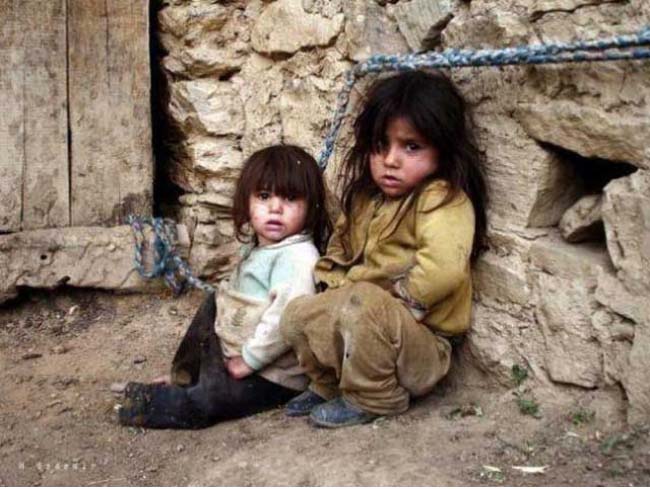Inequality of income is a global phenomenon that has attracted a lot of attention across the word, especially in developing nations. In broader terms, inequality has many aspects but talking specifically about inequality of income, it implies a situation where the wealth is distributed unevenly among the various population groups. This results in creation of huge income gaps between the rich and the poor, thus making the rich richer and the poor poorer. Income inequality is more common in developing countries where economic policies are either not responsive to eliminate inequality, or are not effectively implemented due to corruption, insecurity etc.
Afghanistan, in spite of considerable economic developments over the last one and half decades, still remains one of the poorest countries where, according to the World Bank report (National Risk & Vulnerability Survey data in 2007-08 and 2012), 36% of the population lived under poverty line. The World Bank further reported that though the annual GDP rate grew at 6.9% through this period, the Gini index increased from 29.7% in 2007-8 to 31.6% in 2011-12, which remarks a widened gap between living standards of the poor and the rich.
The factors that contribute to eradication of poverty may at the same time contribute to reducing income gaps. However, to specifically target income inequality in a society it is important to support development of robust fiscal and monetary systems. While monetary policies direct the countries’ financial systems, the fiscal policies enhance proper collection of revenues and rational allocation of public funds.
Afghanistan has had achievements in the fiscal and monetary sectors over the last few years but the country still struggles with a lot of challenges in the areas of revenue generation and collection. Domestic revenue as percent of GDP has been growing but it still constitutes only a minor percentage. According to IMF reports, the percent of domestic revenue to GDP was estimated at about 10.2% in 2015 which is lower than the countries in the region.
Informal payment systems and informal businesses complicate tax-collecting procedures, in most cases making it impossible to track transactions and to tax them. On the other hand, corruption paves the way for tax evaders to pay smaller amounts in bribes and thus avoid payment of large amounts in taxes. To add more, public funds are inclined to be misused at various levels instead of being allocated for provision of decent social services to the public. This means the poorer segments of the society remain underprivileged in receipt of basic public services such as health, education, transportation etc.
Insecurity is another major issue in the Afghan context that further widens the gap between the various income groups. Private investments are usually halted because of insecure conditions within the country and thus investors prefer to invest their funds in other countries where they feel more secure. Putting aside the fact that the state does not gain any benefit by taxing them, the wealth is not invested so as to create employment for the locals.
Lack of technical skills and educational opportunities for the poor is another major obstacle hindering chances of the poor to gain better living standards. Decent education opportunities are only available for the upper classes of the society while the rest either rely on public education, or are totally deprived of schooling.
Besides the public policy issues, there are concerns on individual spending decisions at household levels. Making inadequate expenditure decisions is something that is led by social norms and values, which worsens situation of the poor. For instance, even the poorest people make huge expenditures on occasions such as weddings, funerals and the like. By doing this, they spend their life time savings during such occasions, which they could rather invest in a profit bearing activity to improve their livelihood. Similarly, spending massive amounts on extravagances such as luxurious cars, smart phones, ornaments, and the like have become part of daily fashion for the upper income groups.
In a way, the factors that contribute to income inequality fuel one another and thus causing the gap to further widen. Reducing income gaps require strategic policy reforms, resources, and hard work.
Formalization of businesses should further be strengthened in order to heighten the tax base. Besides that, tax policies require to be amended with the intention of targeting the sectors that are undertaxed or that are not taxed at all. Financial sector activities need to be further expanded in order to cover maximum financial transactions and thus stop informal and illegal flow of funds within and outside the country. In regards to provision of loans to the general public, though a considerable number of microfinance programs are currently active across the country, expansion of such programs is necessary to respond to the ever-growing demand for low cost loans.
Focusing on education of the poor can create hope for a promising future of their children and therefore must remain a high priority. Additionally, skills development programs for adults are important in providing them with ability to work in more technical occupations and earn better income.
Besides design and implementation of sound macroeconomic policies responsive to eradication of poverty and inequality, there is need for widespread public awareness on how to make sound expenditure decisions and to invest funds in profitable businesses. On the other hand, in areas where people use traditional techniques for earning income, it is essential to enhance their abilities so that they utilize the available resources using modern techniques and thus attain improved efficiency.
Home » Opinion » Prospects of Poverty and Income Inequality in Afghanistan
Prospects of Poverty and Income Inequality in Afghanistan
| Farzana Rashid Rahimi

